Japan in focus | 3 min read May 2025

Japan in focus | 4 min read | June 2025
No Longer an Outlier
Ten ways the Japanese economy is moving toward greater alignment with other developed economies.

Japan in focus | 4 min read | June 2025
Ten ways the Japanese economy is moving toward greater alignment with other developed economies.
In the 1960s, Nobel prize winner Simon Kuznets famously quipped, “There are four types of countries: developed, undeveloped, Japan, and Argentina.”
In the second half of the 20th century, Japan must have seemed like a bizarre outlier with its rapid economic growth. Then, during its three lost decades of economic stagnation, which began in the 1990s, it may have struck observers as strange for the opposite reason. Japan showed its uniqueness with a distinctive blend of problems, including nonperforming loan issues, deflation, and unconventional monetary policy.
Now, however, Japan appears to be moving toward normality in many ways. Below, we look at 10 statements about the Japanese economy that used to be true, which we will call the “old normal”, and how each of these aspects has been changing.
Japan has been known for the rigidity of its labor market. However, the country’s culture of lifetime employment has started to unravel, and the labor market has become more flexible. This can be seen in rising numbers of young people, particularly in their 20s and 30s, changing jobs, citing as their motivation increases in salaries and more flexible working practices.
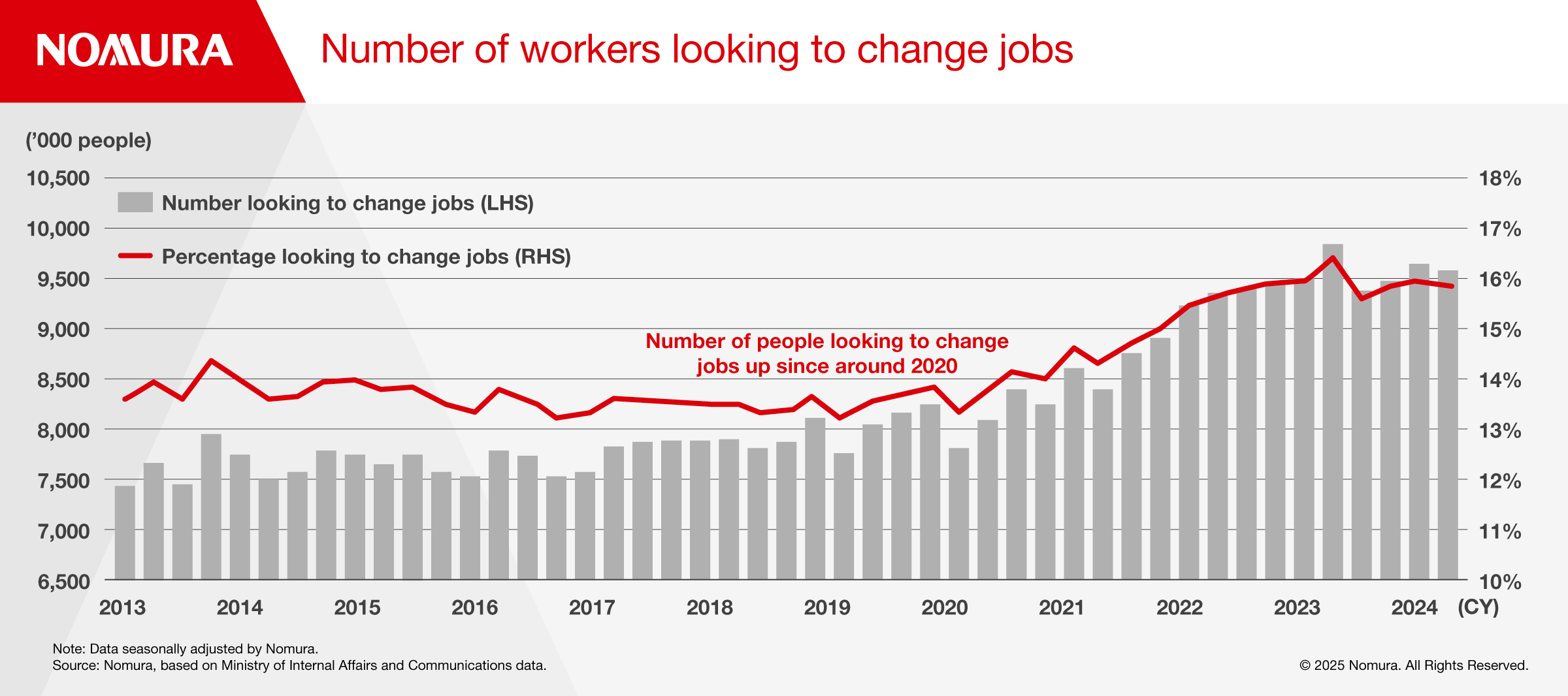
We expect job listing websites and services related to job changes to benefit from this structural shift.
A strict mandatory retirement age is a key feature of the lifetime employment system, but this system has already started to collapse. As of 2022, most companies still had compulsory retirement ages but, since then, the average mandatory retirement age has been gradually rising.
Also, growing numbers of elderly people are continuing to work through re-employment systems, even after reaching retirement age. Wages for this group are being hiked more than those of other age groups. If the elderly are able to keep working for longer, this could improve the sustainability of the pension system and other social security spending.
The workstyle reforms implemented in Japan in 2016 have led to progress in addressing overly long working hours. Annual working hours for employees declined by nearly 25% between 1980 and 2024.
Tightening restrictions on working hours at a time when labor shortages are intensifying has also made companies aware of the need to bolster productivity. We think this has made conditions more conducive to business process efficiency gains, labor-saving investments (automation, digitalization, and AI), and consolidation via M&A.
Japan began admitting a larger number of immigrant workers around 2015, and these workers have now become an essential part of the labor force.
In 2024, the proportion of foreign nationals living in Japan was 2.9%, considerably lower than the 10–20% in the US and major European countries. However, the Japanese government has raised the limit on the number of foreign nationals allowed to enter Japan under the Specified Skilled Worker Program from 340,000 to 820,000 between FY2024–FY2028.
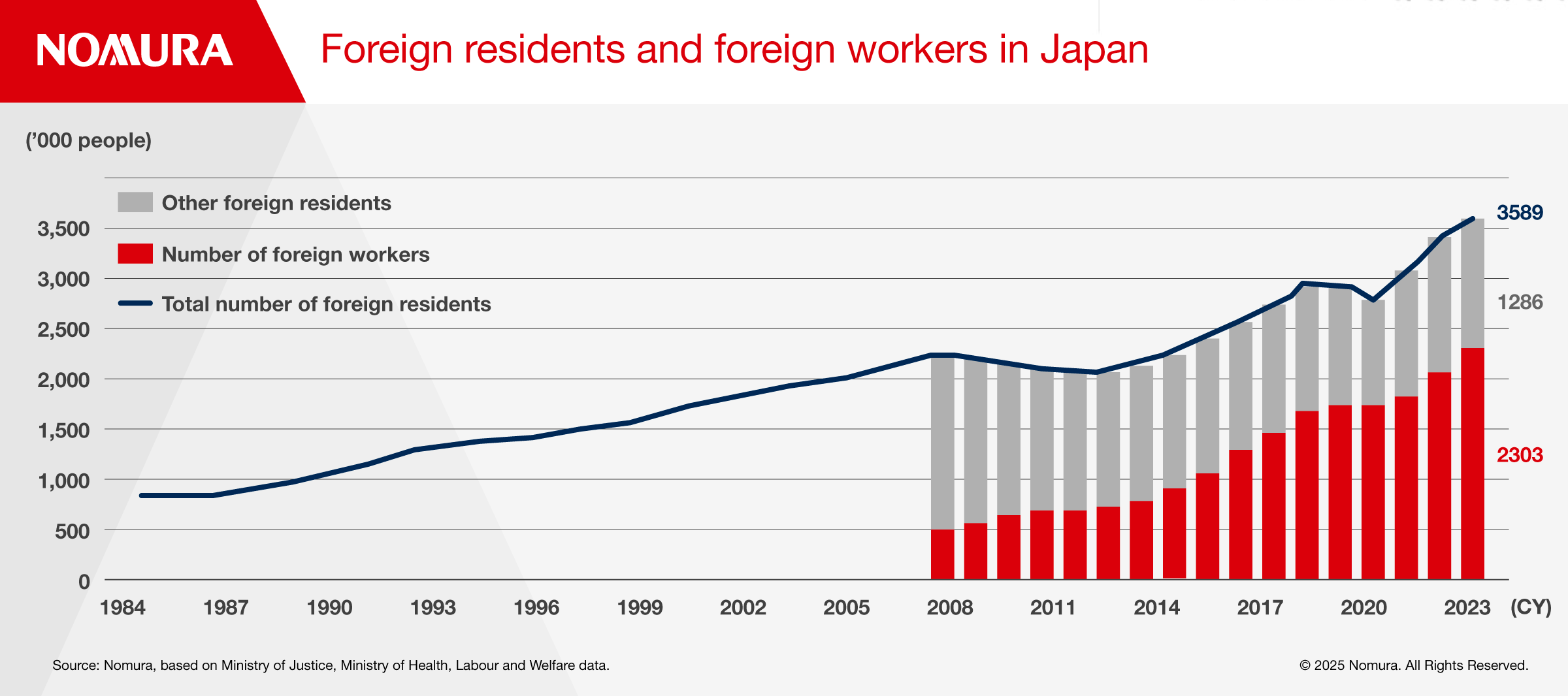
Partly in response to increasingly severe labor shortages, Japan is making progress with its immigration policy, and the government estimates that its immigration rate will rise to 7.0% by 2050.
The Japanese government’s fiscal position is by far the worst in the world. As of 2024, outstanding government debt was equivalent to more than 200% of GDP.
However, Japan’s fiscal position has started to improve as:
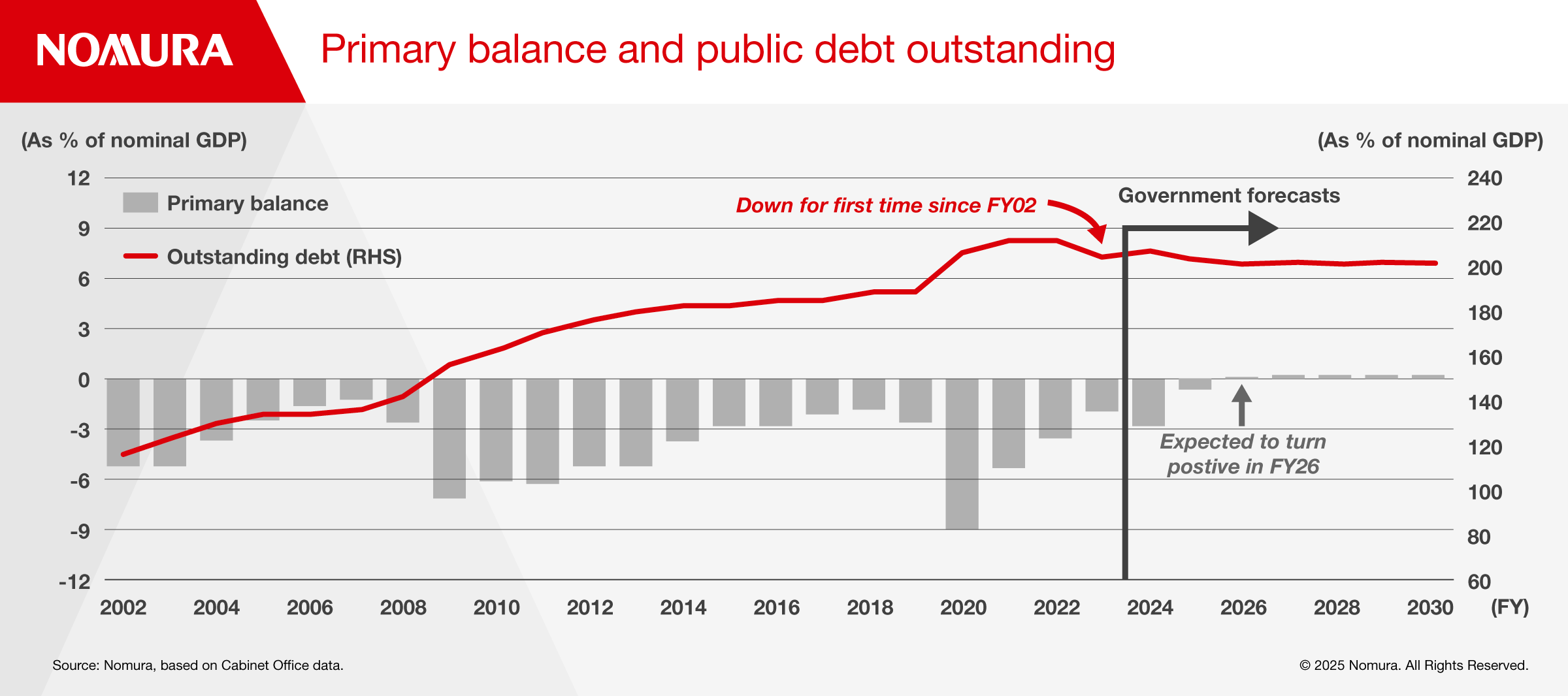
Pacifism is enshrined in Article 9 of Japan’s constitution. However, the government has responded to changes in Japan’s national security situation by increasing defense spending under the policy of “a proactive contribution to peace”.
As a result, the environment for the defense industry has begun to change. In 2014, the government made it possible for companies to engage in international joint development and export of weapons (under certain conditions), which had been banned.
Three key defense policy documents were revised in 2022, and the government announced it would increase defense spending from 1% to 2% of GDP by FY2027.
All of Japan’s nuclear power plants were shut down following the earthquake, tsunami, and nuclear accident in March 2011. The reactors have gradually been restarted but, as of February, their capacity utilization is still much lower than before the accident, partly because Japan’s Strategic Energy Plan has called for reducing reliance on nuclear power.
However, there was a stark change of stance in the new Strategic Energy Plan, approved by the Cabinet earlier this year. It includes explicit wording about maximizing the use of highly decarbonized power sources that contribute to energy security, including renewables and nuclear power. There have also been discussions about the construction and expansion of nuclear power plants.
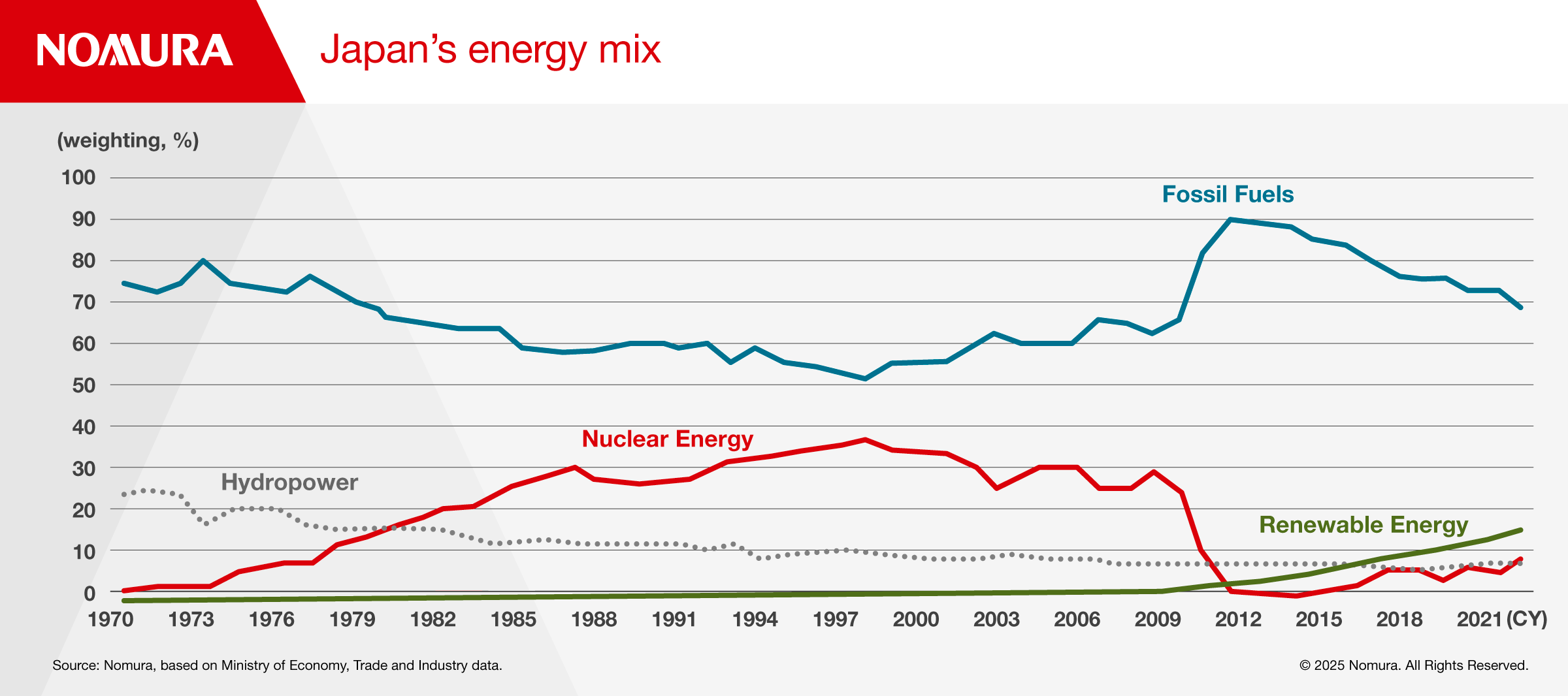
The Bank of Japan (BOJ) ended its negative interest rate and yield curve control policies in March 2024. It has hiked its policy rate to the highest level in 17 years, 0.50% in January 2025, and is considering further increases.
The BOJ’s Review of Monetary Policy from a Broad Perspective, released in December 2024, acknowledged the limitations of its unconventional monetary policies, stating that they “cannot fully substitute for the conventional monetary policy measures that control short-term interest rates”.
We expect the BOJ to patiently continue raising rates while testing the neutral rate to prepare for the next economic downturn.
Japan’s population shifted into decline in 2008, and a contraction in the domestic market is often viewed as a headwind for corporate management. However, profit margins at Japanese companies have clearly improved. We attribute this in large part to cost-cutting productivity gains that aimed to reduce corporate waste.
The sharp rise in overseas sales at Japanese companies is also an important factor. Profits at overseas affiliates (reflected in direct investment income) increased from the 2000s through the 2010s. In the 2020s, as a result of the weak yen, these profits have grown to around a quarter of the value of goods exports.
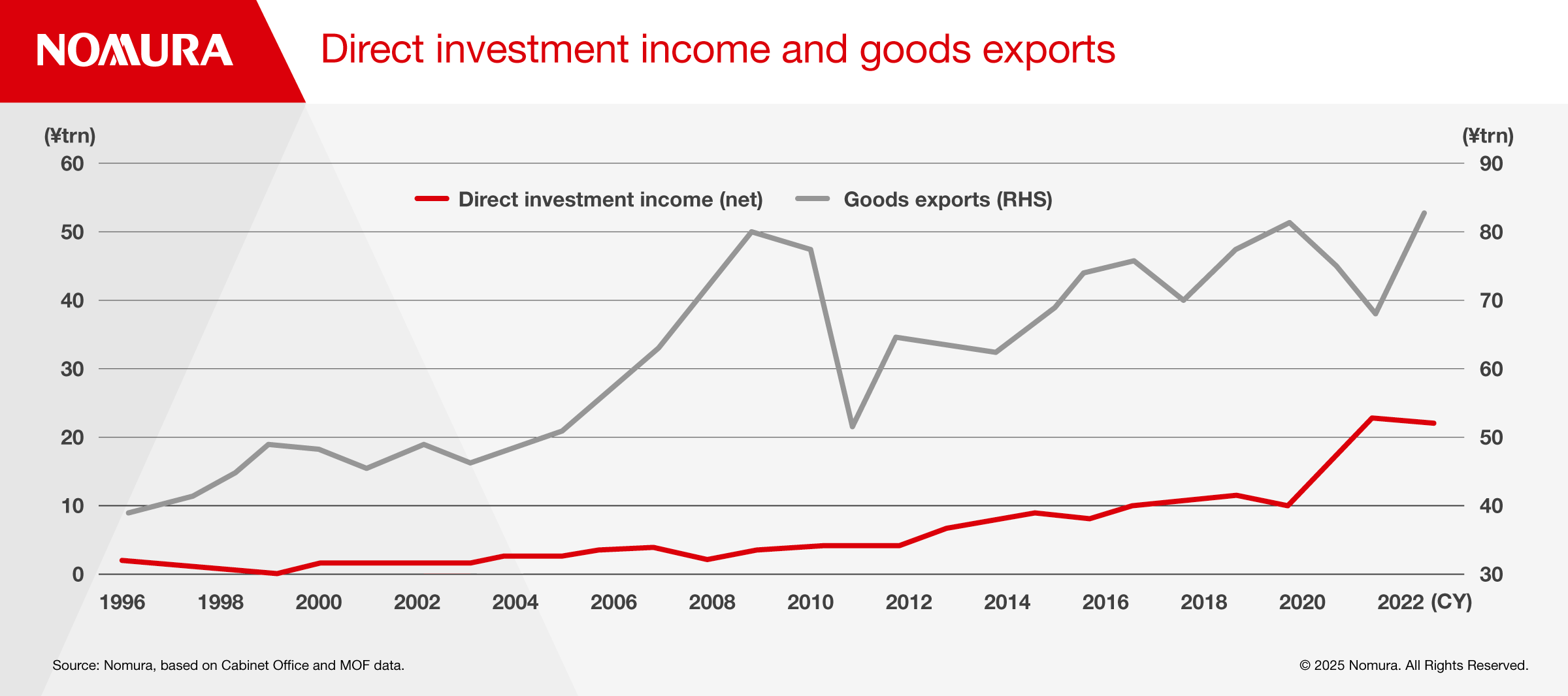
With protectionism growing around the world, one possible solution for Japanese firms may be to capture share via overseas affiliates.
Japan has a limited land area suited to agriculture (12.8%) due to its mountainous geography, compared with the global average of 36.8%. Japan’s calorific food self-sufficiency rate is also low at 38%, though the Japanese government is aiming to raise it to 45% by FY2030. This means Japan still relies on imports for the stable supply of food.
However, the value of Japan’s food exports has increased substantially in recent years, allowing it to successfully tap other countries’ markets. In 2013, UNESCO registered washoku (traditional Japanese cuisine) as an Intangible Cultural Heritage, helping fuel foreign demand.
The changes taking place in Japan today are set to affect every corner of society.

Chief Market Economist, Japan
This content has been prepared by Nomura solely for information purposes, and is not an offer to buy or sell or provide (as the case may be) or a solicitation of an offer to buy or sell or enter into any agreement with respect to any security, product, service (including but not limited to investment advisory services) or investment. The opinions expressed in the content do not constitute investment advice and independent advice should be sought where appropriate.The content contains general information only and does not take into account the individual objectives, financial situation or needs of a person. All information, opinions and estimates expressed in the content are current as of the date of publication, are subject to change without notice, and may become outdated over time. To the extent that any materials or investment services on or referred to in the content are construed to be regulated activities under the local laws of any jurisdiction and are made available to persons resident in such jurisdiction, they shall only be made available through appropriately licenced Nomura entities in that jurisdiction or otherwise through Nomura entities that are exempt from applicable licensing and regulatory requirements in that jurisdiction. For more information please go to https://www.nomuraholdings.com/policy/terms.html.
Japan in focus | 3 min read May 2025
Japan in focus | 3 min read May 2025
Japan in focus | 3 min read September 2024